Apple Vision Pro
Earlier today, at WWDC 2023, Apple announced their eagerly anticipated Virtual Reality (VR) / Augmented Reality (AR) headset, known as the Apple Vision Pro.
Tim Cook (Apple CEO) described the product as “the first computer you look through, not at”.
I believe this statement accurately represents the ambition, but not the short-term reality. For example, the Apple Vision Pro headset is opaque, with your eyes one inch from the two micro-OLED displays.
The fact that Tim Cook describes the Apple Vision Pro as a computer, specifically a spatial computer, is also interesting.
This subtle shift in terminology is classic Apple marketing, signalling that although the Apple Vision Pro may look and operate like a traditional VR/AR headset, any direct comparison should be avoided. Apple would have you believe this is something different, something new and more compelling.
I was not at WWDC, therefore I have not been hands-on with the Apple Vision Pro. However, the last time Apple entered a new market with hardware was the iPhone, back in 2007 (I consider the iPad and Apple Watch to be an extension of the same theme).
Therefore, as a technologist, I could not resist sharing my initial thoughts on this historic announcement.
Hardware
Although Apple was quick to differentiate the Apple Vision Pro from existing VR/AR headsets, the form factor is remarkably familiar. For example, the photo below is my son using the Meta Quest Pro and Microsoft HoloLens 2.
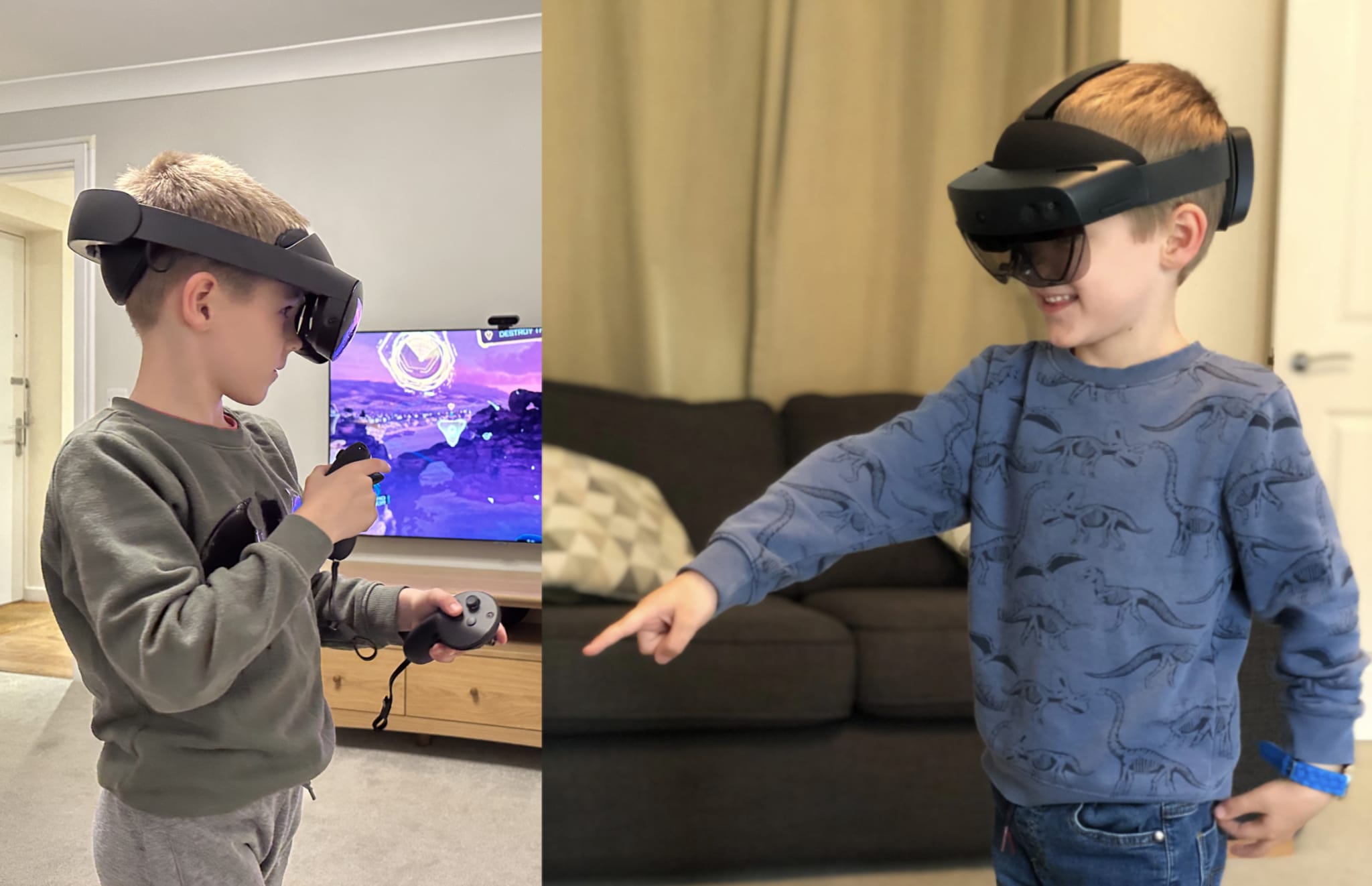
Like the Apple Vision Pro, the Meta Quest Pro and Microsoft HoloLens 2 are devices you wear on your head (strapped to your face), with your eyes inches from a pair of displays, supported by an array of sensors and cameras.
Before the announcement, I had hoped Apple had found a way to innovate on the form factor, delivering a more streamlined headset that would improve comfort, whilst making it more acceptable/viable to wear across a range of scenarios.
Unfortunately, the “ski goggles” design of the Apple Vision Pro is overly familiar, a continuation of the theme established by the Oculus Rift DK1, released in 2013.
With that said, even from the photos and videos, I am confident the Apple Vision Pro will be the “best” headset on the market. The design, premium materials and subtle queues pulled from other Apple products (e.g., the Digital Crown) all look very refined.
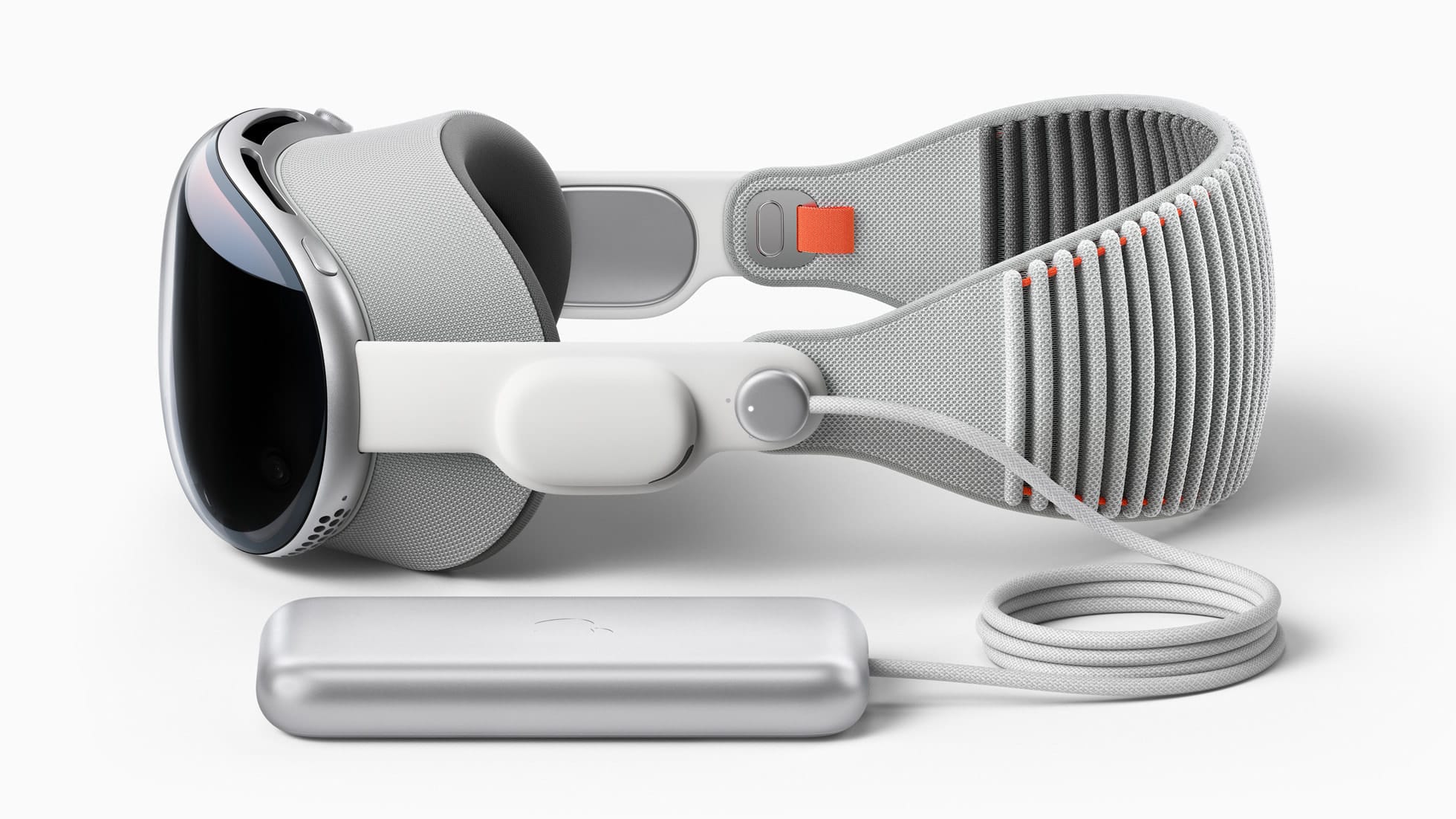
The specification is also a clear generational leap, with two Micro-OLED displays, providing an estimated resolution of 3800x3000 (3400 PPI) per eye and a refresh rate of up to 96Hz. Combined with the M2/R1 architecture, twelve cameras, five sensors and six microphones, the Apple Vision Pro should easily outperform the competition.
There is even an outward-facing lenticular OLED display, designed to indicate to others (not wearing the headset) if the wearer is available to chat or immersed in a virtual experience. This is achieved through a slightly disconcerting virtual representation of the individual’s eyes, which Apple calls “EyeSight”.
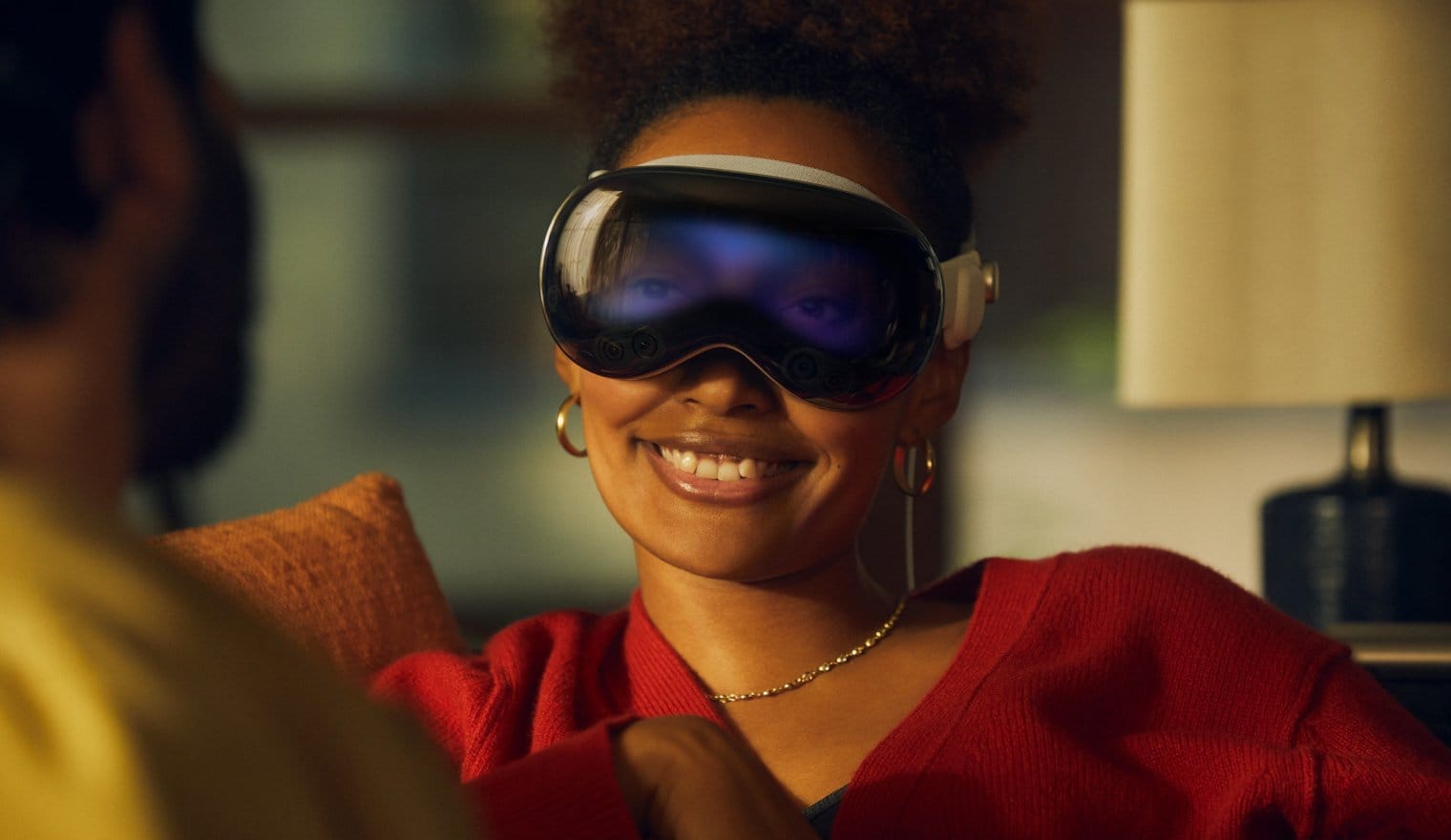
Although I applaud the creative thinking, I am not sure this feature is enough to make wearing the Apple Vision Pro socially acceptable. I simply can not imagine interacting with family/friends or co-workers in the real world whilst wearing a bulky headset that obscures half my face.
Finally, Apple was careful not to draw too much attention to the connected battery pack, which is rated for two hours of use. Unlike other VR/AR headsets, the battery back is connected via a cable, which can be kept in a pocket or connected via a belt loop.
The advantage of this approach is that it removes weight from your head. However, I suspect the cable and the need to carry an extra component will quickly become a point of frustration.
The two hours of battery life is also potentially limiting, although it does appear the battery pack includes a USB-C port for additional power.
At this point, with the impressive hardware specification in mind, it is worth mentioning the price. Unsurprisingly, these cutting-edge components and high-quality materials do not come cheap.
The Apple Vision Pro will start at $3,500, which will likely translate to £4,000. To put this into perspective, you could purchase a 13-inch M2 MacBook Air ($1099), iPhone 14 ($799), iPad 256GB ($599), Watch Series 8 45mm ($749), and AirPods Pro ($249) for under the price of the Apple Vision Pro.
It is also significantly more expensive than the competing VR/AR headsets. For example, Meta Quest 2 ($299), Meta Quest 3 ($499), Meta Quest Pro ($999), etc.
The pricing is more in line with enterprise business VR/AR headsets, such as the Microsoft HoloLens 2 (also $3,500). However, this does not appear to be the market being targeted by Apple.
Considering this is an unproven, first-generation product, with a limited third-party ecosystem, the price is ambitious, even for the most “die-hard” Apple fan.
Software
Apple showcased a new operating system known as visionOS (internal codename xrOS). The best equivalent would be iPadOS, with familiar design elements, presented in three dimensions.
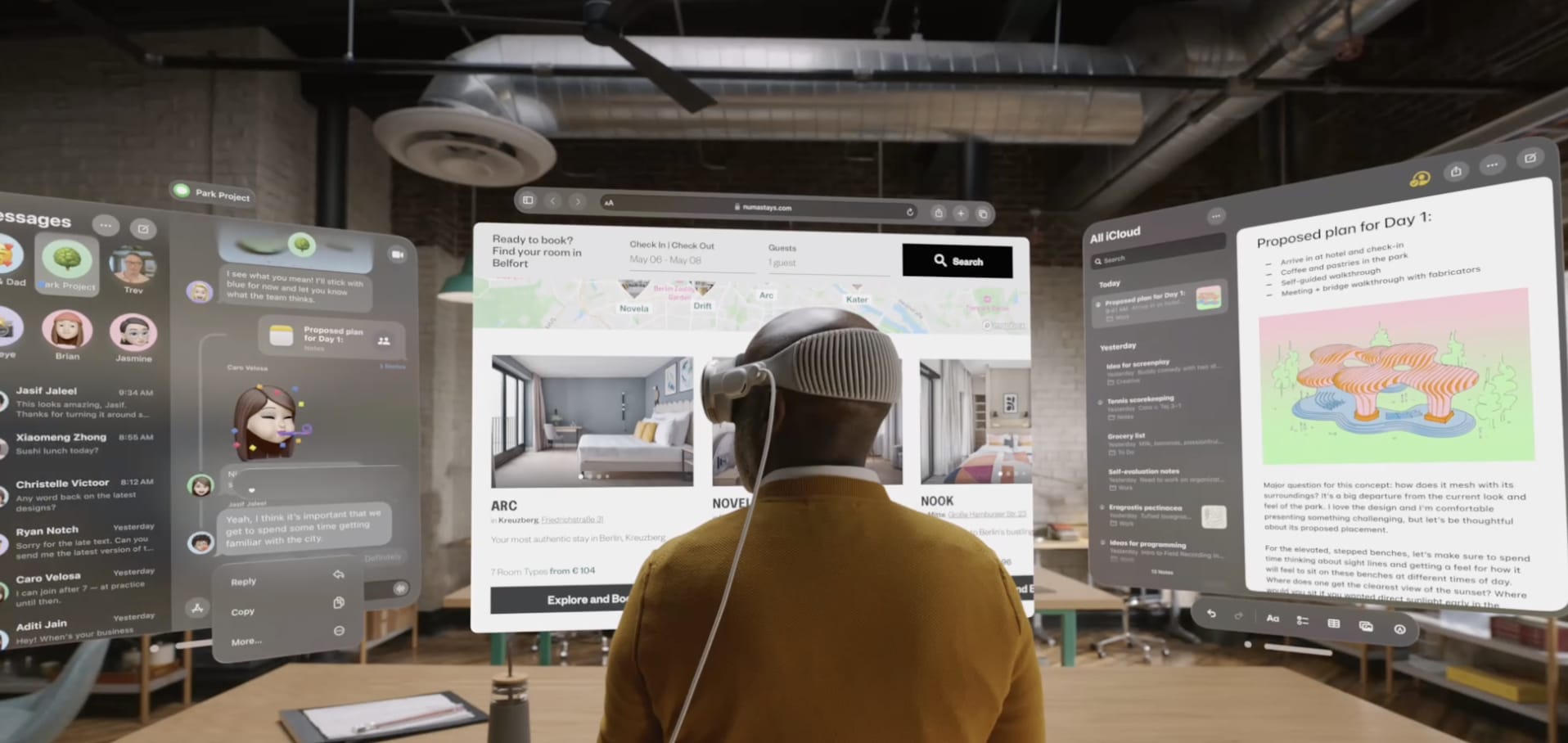
The demos of visionOS remind me of the operating system used by the Meta Quest. With infinitely resizable windows, capable of presenting traditional 2D graphics, alongside immersive 3D graphics.
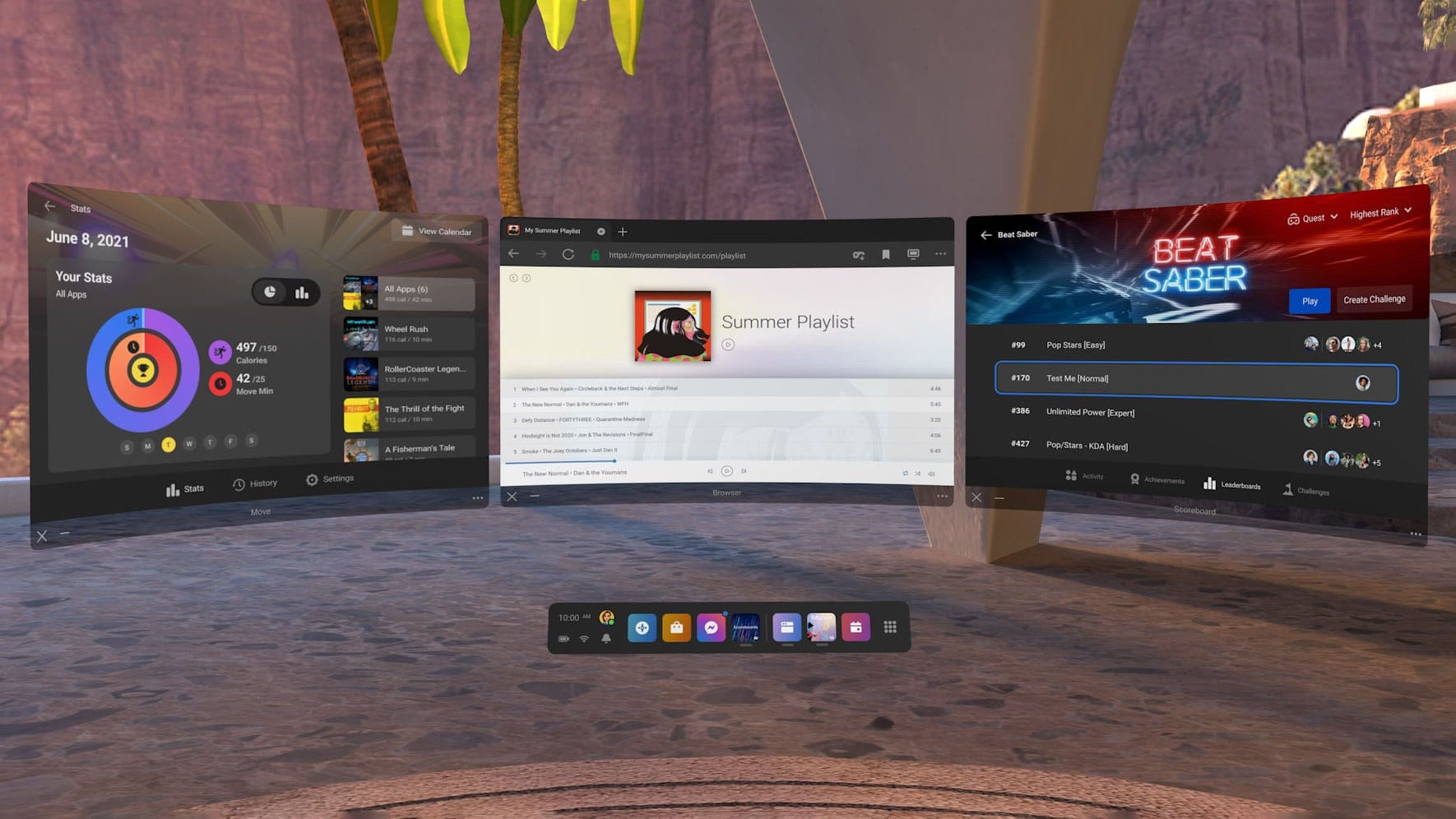
I am sure Apple have some “tricks” not yet revealed, but I was a little surprised not to see a “killer app” that showcased the power of visionOS. Instead, we were treated to a range of demos that were either pre-rendered (representative) or “floating” versions of the apps we use on iPadOS, offering no obvious unique value.
Thankfully, I am confident that Apple will deliver higher quality assurance than the competition. One of my biggest frustrations with the Meta Quest software is how buggy it can be, with frequent pauses, errors and long loading times. This extends into their first-party apps, which should showcase the platform, but commonly act as a point of ridicule (e.g., Meta Horizon Worlds, etc.)
Human Interface
At this point, I would argue that the hardware and software are an evolution, not a revolution. For example, I think you can draw a fairly clear line from the Oculus Rift DK1 (2013) to the Apple Vision Pro (2023).
In fact, many of the concepts enabling the Apple Vision Pro remind me of my first experience with virtual reality, dating back to the early-90s, with the Virtuality 1000CS. This is not necessarily a bad thing, Apple is rarely first to market, but they do usually deliver a quantum leap forward (a revolution).
There was one part of the WWDC keynote that caught my eye (no pun intended).
The majority of VR/AR headsets on the market today include physical controllers for the human interface, whilst also (in certain scenarios) supporting hand tracking. The Apple Vision Pro does not include any physical controllers, instead, it relies exclusively on eye tracking, hand tracking and voice.
On the surface, this feels like a negative. However, based on the initial feedback from individuals at WWDC, it would appear the combination of eye and hand tracking could be a game changer.
As demonstrated in the keynote, you navigate the user interface by simply looking, and touching your index finger and thumb to select. This has the potential to be very intuitive and fast, with some initial feedback from users describing it as “telepathy”.
In addition, the cameras that detect your hands have a very wide field of view, removing the need to hold your arms up for prolonged periods, which can quickly become fatiguing.
I can not wait to try this feature! It could be a real breakthrough for the human interface.
Value Proposition
Apple presented a range of scenarios highlighting how they believe people will use the Apple Vision Pro, including productivity, collaboration, social, media consumption, gaming, etc.
In short, the keynote indicated that the Apple Vision Pro could replace your computer and home media setup, which is an ambitious statement.
This value proposition is not new, simply an extension of the themes previously presented over the past decade by Oculus, Meta, Microsoft, Google, Magic Leap, etc.
Worryingly for Apple, these scenarios, although interesting as a demonstration, have (up to now) failed to capture the imagination of real-world users. For example, VR/AR headsets have not seen mainstream adoption, instead being relegated to niche use cases and/or technology enthusiasts (like me).
At this point, it is unclear if the Apple Vision Pro (including its heavy cost of entry) offers enough unique value to sway consumer opinion.
Conclusion
I have personally owned many VR/AR headsets, including Google Glass, Oculus Rift, Meta Quest 1/2, Meta Quest Pro, Microsoft HoloLens 2, etc. I love the technology and have had some amazing experiences, but these have always been limited to short, specific use cases that emphasise the unique value of VR/AR.
For example, I have previously written about my experience playing Half-Life: Alyx, which remains one of the only “Triple A” games designed specifically for virtual reality.
In my opinion, this game is a masterpiece, putting forward a compelling reason why virtual reality can offer something truly innovative that goes above and beyond traditional gaming.
With that said, I rarely play Half-Life: Alyx for more than 45 minutes at a time. The experience is amazing, making the effort of wearing a cumbersome headset worthwhile, but only for a short period.
There is no question in my mind, the Apple Vision Pro will be a spectacular “product”, with incredible hardware and software.
Unfortunately, I do not believe this guarantees success, underpinned by one simple question…
Does anyone want a large headset strapped to their face?
In my experience, the current hardware limitations make VR/AR viable for short periods, targeting unique use cases. However, I am less convinced general consumers will accept these limitations when positioned as a device that you are expected to wear all day for personal and/or work purposes.
This is especially true when attempting to replace scenarios where VR/AR offer no obvious value over traditional options. For example, does anyone want to go through the effort of strapping a headset to their face for simple tasks such as browsing photos, watching videos, etc? Does anyone want to interact with computer-generated avatars via FaceTime vs. seeing the actual person?
Finally, it was interesting to me that I have yet to see a member of the Apple team wearing the headset. I respect it is very difficult to deliver a compelling VR/AR demonstration on stage. However, part of me believes Apple marketing was eager to avoid the “meme-worthy” ridicule frequently fired at the Meta team for wearing a headset in public and/or interacting in virtual reality.
This feels like a contradiction, considering Apple is advocating for the fact that wearing the headset in public will be socially acceptable.
In conclusion, I can see a world where the concepts behind spatial computing are the future. However, I fear the current hardware limitations associated with the headset are a significant barrier to mainstream adoption.
Potentially better positioning would have been for the Apple Vision Pro to be released for developers only, providing a foundation to build the spatial computing ecosystem and a more compelling value proposition, ahead of general consumer adoption.
I suspect the positioning, timing and price of this first-generation Apple Vision Pro were controversial topics within Apple, potentially more so than any previous Apple product.
Since 2018, Apple has filed approximately 12,300 patents in the US and spent $97B on research and development. Apple stated that they filed over 5000 patents for the Apple Vision Pro. Therefore, although far from a reliable statistic, Apple may have already spent $40B on this product.
That is a lot of money (even for Apple), which will come with a lot of pressure from leadership, shareholders, etc.
I can not help but question if this pressure to deliver a return on investment negatively influenced the product that was announced earlier today.
Either way, I respect Apple for being bold and can not wait to see how general consumers react to the product upon release in Q1 2024.